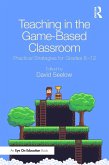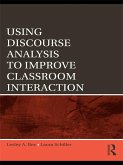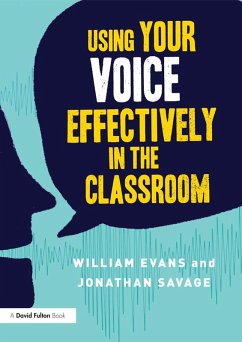Nonverbal signals are less easily controlled that words and thus, potentially, offer reliable information to both teachers and children on each other's true intentions. But such signals are also more ambiguous than words, and this makes them valuable when teachers or children wish to send a message they do not want to be challenged. Even so, misunderstandings can occur, for example, between different ethnic groups. Originally published in 1991, Sean Neill explores how children's skill in using and understanding nonverbal signals increases with age.
The appropriate nonverbal signals for teachers differ from those used in informal conversation because of the teacher's controlling, instructing and encouraging role, and this creates problems for new teachers, who also find it difficult to interpret the limited feedback from the class. A detailed coverage of teachers' and children's signals leads on to a survey of how teachers acquire nonverbal skills and research on effective training. Classroom Nonverbal Communication provides the only comprehensive survey of these areas for staff involved in the initial and in-service training of teachers, and in staff development.
Classroom social arrangements are permanently reflected in seating layout and room design, which can allow teachers and administrators to influence classroom interaction through advance planning. For these groups, this richly illustrated volume assesses how effective such planning really is.
Sean Neill has researched room layout and nonverbal communication in education since 1975 and has published many papers dealing with these issues. He provides a uniquely comprehensive survey of the research evidence on classroom nonverbal communication.
The appropriate nonverbal signals for teachers differ from those used in informal conversation because of the teacher's controlling, instructing and encouraging role, and this creates problems for new teachers, who also find it difficult to interpret the limited feedback from the class. A detailed coverage of teachers' and children's signals leads on to a survey of how teachers acquire nonverbal skills and research on effective training. Classroom Nonverbal Communication provides the only comprehensive survey of these areas for staff involved in the initial and in-service training of teachers, and in staff development.
Classroom social arrangements are permanently reflected in seating layout and room design, which can allow teachers and administrators to influence classroom interaction through advance planning. For these groups, this richly illustrated volume assesses how effective such planning really is.
Sean Neill has researched room layout and nonverbal communication in education since 1975 and has published many papers dealing with these issues. He provides a uniquely comprehensive survey of the research evidence on classroom nonverbal communication.
Dieser Download kann aus rechtlichen Gründen nur mit Rechnungsadresse in A, B, BG, CY, CZ, D, DK, EW, E, FIN, F, GR, HR, H, IRL, I, LT, L, LR, M, NL, PL, P, R, S, SLO, SK ausgeliefert werden.









